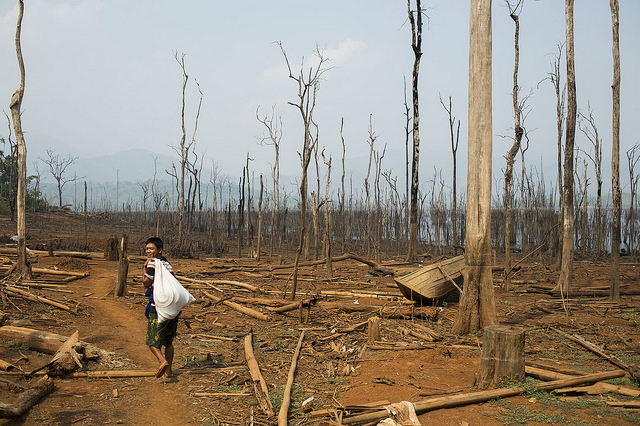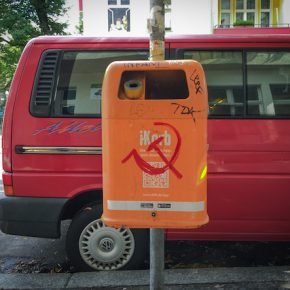The notion of the gem or ore prospector occupies a certain romanticism in literature, and even historical non-fiction of gold rushes past. For American audiences, a rugged individualism is the norm, and even during the heyday of Soviet extractive resource development in Siberia, concessions were made to individual initiative to encourage the miners (the ones who weren’t forced labor, anyway).
In Myanmar, much of the same appeal is present for those seeking a fortune from the earth – and the sobering realities are much the same. Under colonial rule, the country’s gems and minerals were heavily exploited, but unrest since independence and a lack of trading partners meant that until recently these extractive industries contributed little to the national GDP.
Large-scale industrial mining is primarily the preserve of well-financed foreign investment projects (usually Chinese): most resources are still “mined by local people, often in brutal conditions.” The gem industry has fared little better in terms of employee safety, though is worth far more due to high regional demand for Burmese jade and rubies, which are now so widely exploited by military-owned concerns that traders fear a price collapse is coming.
The income from the gem trade, though, is vastly underreported by the state: in 2011, official statistics put out by Burmese sources ranged between US$34 million – a pittance – to a much larger US$2.66 billion. Independent sources give low-end estimates even higher than that. What accounts for the discrepancy? It appears mainly to be the result of corrupt practices built into the industry that keeps most of the revenue – worth several billion dollars per year – away from the state budget.
The poor conditions, long odds, and corruption, of course do not stop smallholders – the “handpickers” – from trying to strike it rich by joining a mining outfit or prospecting on their own for gems. A potential good find would bring in the equivalent of several years’ pay, if they instead worked in agricultural or service jobs. For those digging gold, copper, or tin, conditions are even worse – with a high incidence of lung disease from dust pollution – and “striking it rich” even more elusive.
Community opposition to these practices is founded across several reactions to the damage the mining enterprises cause the country. First, the sheer physical damage of strip mining hillsides that collapse homes and causes landslides, or turns water supplies to undrinkable sludge pools. With so many small-scale operators limited to literally scrambling for scraps on the canyon floors, safety standards are nonexistent at the bottom. And this encourages recklessness since those actually at the bottom have the least chance of finding even a tiny piece of mineral wealth.
That there is a whole network which benefits from the perpetuation of this cycle is another reason why local activists demonstrate against granting new concessions. After all, for those at the top, “the wealth they have accrued has helped to buy a degree of power that ensures their continued access to the industry’s profits” – so any effort to make things more competitive have to be crushed even though there is plenty of wealth from the earth to keep their books in the black.
This accounts for the high-level skullduggery among the Burmese security forces, and their silent partners abroad, who dominate the extractive industries. And it trickles down to lower levels, to smaller mining concerns and then to those headmen, merchants, or transporters who take their cuts too (they’re far better off than the average miner materially as a result). These extractive patterns are not unique to nonrenewable resources, as evidenced by the state of Burma’s tropical hardwoods industry.
This adds an especially lamentable dimension to the ethnic conflicts between the Burmese security forces and separatist militias, like the Kachin Independence Army, who fight to control key gem mining concessions, or the way the United Wa State Army uses its mines to support their de facto independence from the central government. More recently, a fight over coalfields on Shan State Army territory has led to the “arbitrary arrest, torture, and killing of villagers” to secure the (heavily polluted) mines.
The noble idea of taking back these holdings for local development is corrupted by the presence of a parallel hierarchy that seeks to secure the wealth for certain local development – the development of the rebel leadership’s own bottom line. Reformers and activists are of course then caught in the middle, targeted by both sides of “bosses” for co-option at best, eviction and murder at worst.
These demands on the miners’ mental and bodily health – and grinding poverty – also encourage a hard drugs culture that leaves the miners further without money and subject to another illicit network of exploiters. It’s almost a truism, but throughout history all over the world, the people selling the miners their vittles or gear or distractions from danger and tedium tend to make more than the handpickers and diggers ever do by “mining the miners”.
Photograph courtesy of Norwegian People’s Aid. Published under a Creative Commons license.





